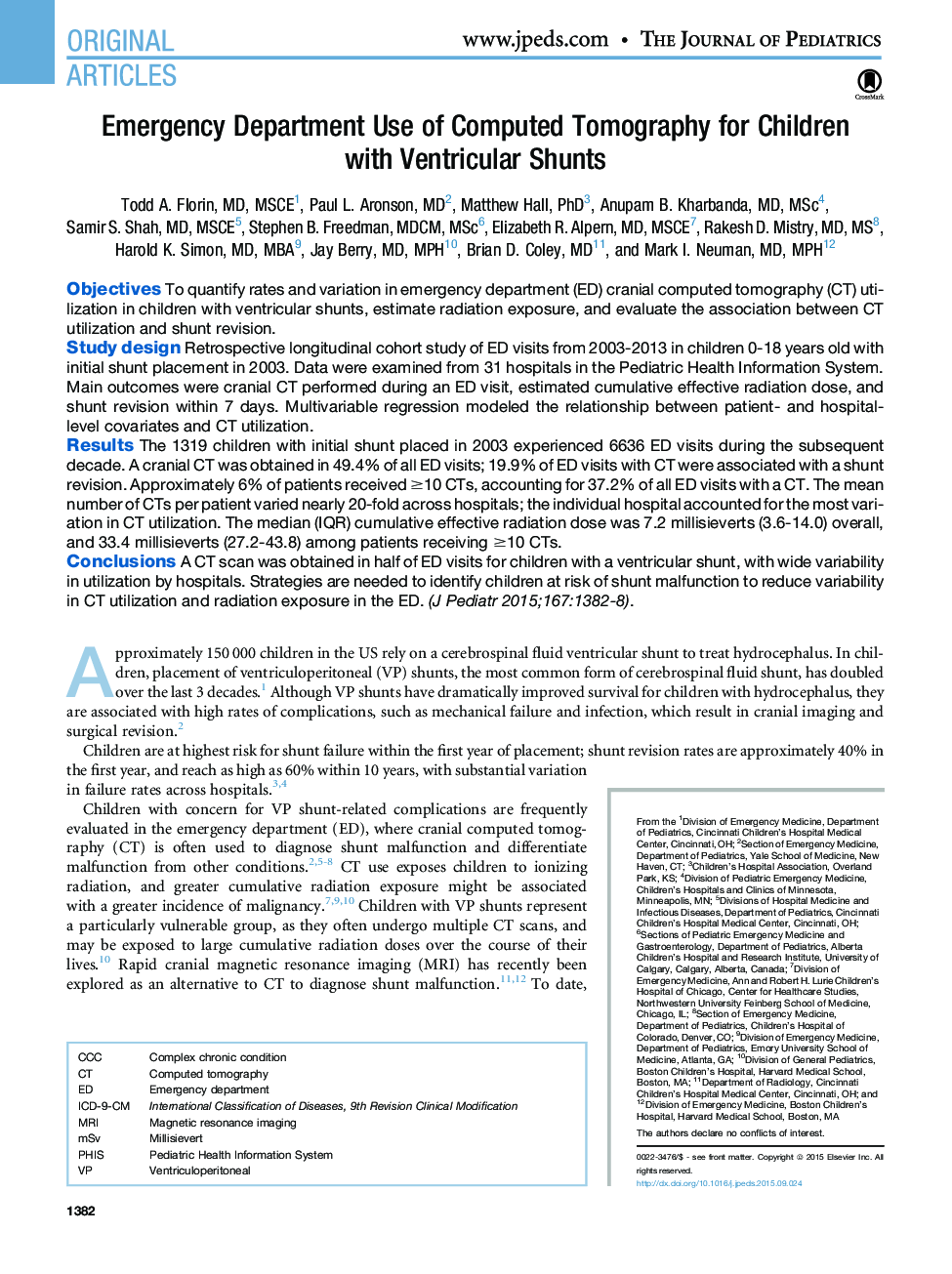| Article ID | Journal | Published Year | Pages | File Type |
|---|---|---|---|---|
| 6219756 | The Journal of Pediatrics | 2015 | 9 Pages |
ObjectivesTo quantify rates and variation in emergency department (ED) cranial computed tomography (CT) utilization in children with ventricular shunts, estimate radiation exposure, and evaluate the association between CT utilization and shunt revision.Study designRetrospective longitudinal cohort study of ED visits from 2003-2013 in children 0-18 years old with initial shunt placement in 2003. Data were examined from 31 hospitals in the Pediatric Health Information System. Main outcomes were cranial CT performed during an ED visit, estimated cumulative effective radiation dose, and shunt revision within 7 days. Multivariable regression modeled the relationship between patient- and hospital-level covariates and CT utilization.ResultsThe 1319 children with initial shunt placed in 2003 experienced 6636 ED visits during the subsequent decade. A cranial CT was obtained in 49.4% of all ED visits; 19.9% of ED visits with CT were associated with a shunt revision. Approximately 6% of patients received â¥10 CTs, accounting for 37.2% of all ED visits with a CT. The mean number of CTs per patient varied nearly 20-fold across hospitals; the individual hospital accounted for the most variation in CT utilization. The median (IQR) cumulative effective radiation dose was 7.2 millisieverts (3.6-14.0) overall, and 33.4 millisieverts (27.2-43.8) among patients receiving â¥10 CTs.ConclusionsA CT scan was obtained in half of ED visits for children with a ventricular shunt, with wide variability in utilization by hospitals. Strategies are needed to identify children at risk of shunt malfunction to reduce variability in CT utilization and radiation exposure in the ED.
